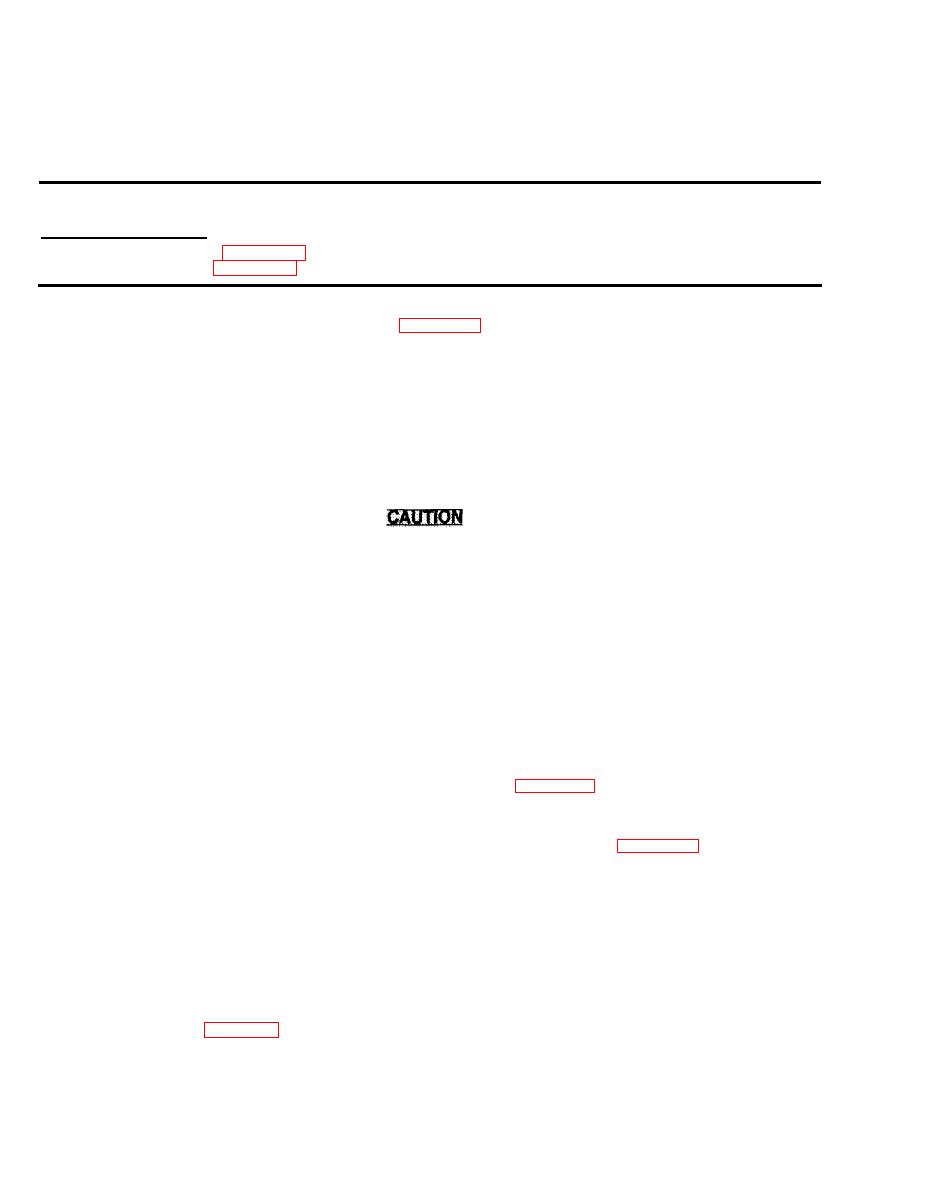
TM 9-4120-388-14
INITIAL SETUP:
Materials/Parts Required
Nitrogen cylinder (item 9, Appendix E)
Refrigerant -22 (item 8, Appendix E)
The entire repaired area should be thoroughly leak tested after repair or replacement of any component, before
a.
it is recharged with refrigerant -22 (item 8, Appendix E). Leak testing is also the method for troubleshooting
when a system has lost all or part of its refrigerant charge through an undetermined cause.
b. Testing method. There are two accepted methods for leak testing the refrigeration system.
(1) The electronic refrigerant gas leak detector is highly sensitive to the presence of a minute quantity of gas
in the air, and due to this factor is quite effective in the detection of small leaks. However, due to the rapid
dispersion of refrigerant gas into the surrounding air, difficulty may be encountered in pinpointing large
leaks. The detector must be used in a well ventilated but draft-free area.
(2) Soap solutions. In this method, a strong solution of a Iiquid detergent and water is brushed onto all points
of possible leakage while closely watching for the formation of bubbles.
If the soap solution testing method is used, thoroughly rinse with freshwater after
testing is completed. A residual soap film will attract and accumulate an excessive
amount of dust and dirt during operation.
Testing procedures. To perform leak testing by use of the electronic detector, it is necessary that the system
c.
be pressurized with a proportion of refrigerant gas. To perform Ieak testing by use of the soap solution method,
the system may be pressurized with dry nitrogen alone.
(1) To pressurize a system that has some refrigerant charge, for either leak testing method:
(a) Remove the hose connection protective caps from the high and low pressure service valves.
(b) Connect the hoses from a charging manifold to the service valves.
NOTE
If it is possible that the problem may not be a leak and that you may not have to replace
a refrigeration system component, refrigerant-22 (item 8, Appendix E) maybe substi-
tuted for the nitrogen in the following test. If nitrogen is used, you will have to discharge,
evacuate, and recharge the system after this test is completed.
(c) Connect a nitrogen pressure regulator and nitrogen cylinder (item 9, Appendix E) to the center hose
connection of the charging manifold.
(d) Open the unit service valves and the charging manifold valves.
(f) Perform leak test.
(9) If a leak is found, discharge and purge the system and repair leak. See specific instructions for compo-
nents to be removed.
(h) If a leak was not found and refrigerant-22 was used to pressurize the system, see charging instructions.
(See para 5-12.)

